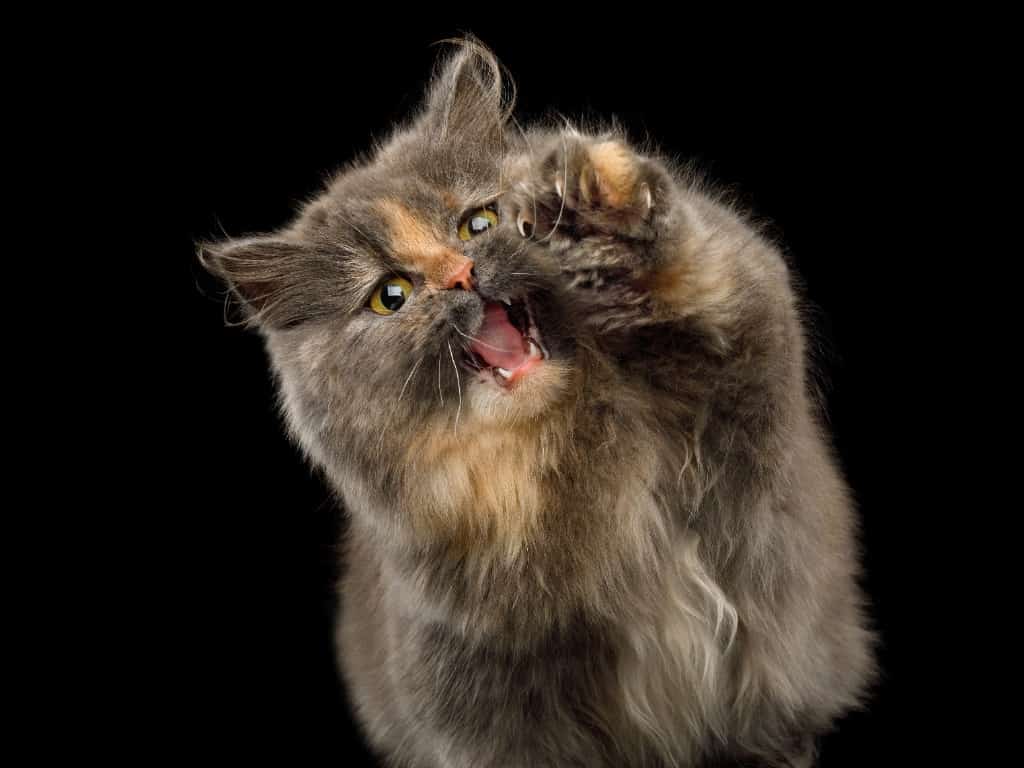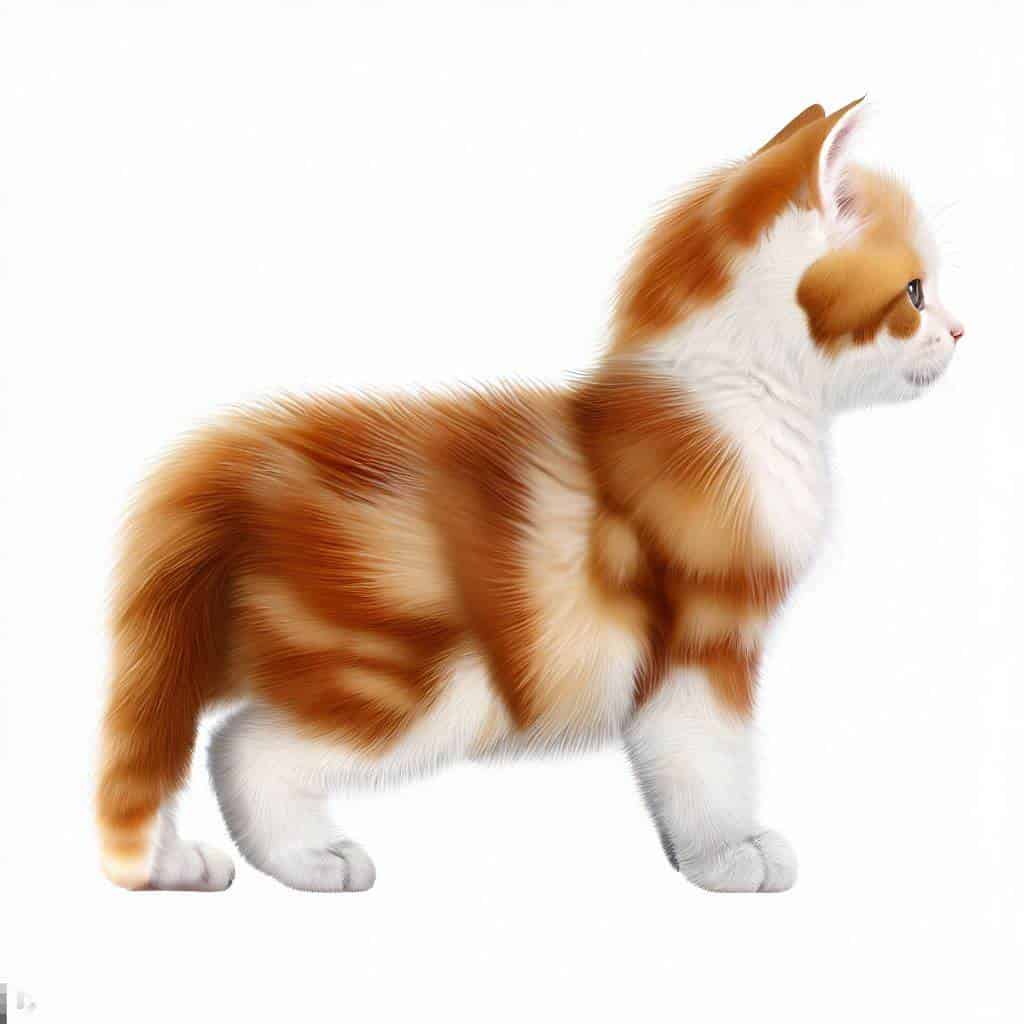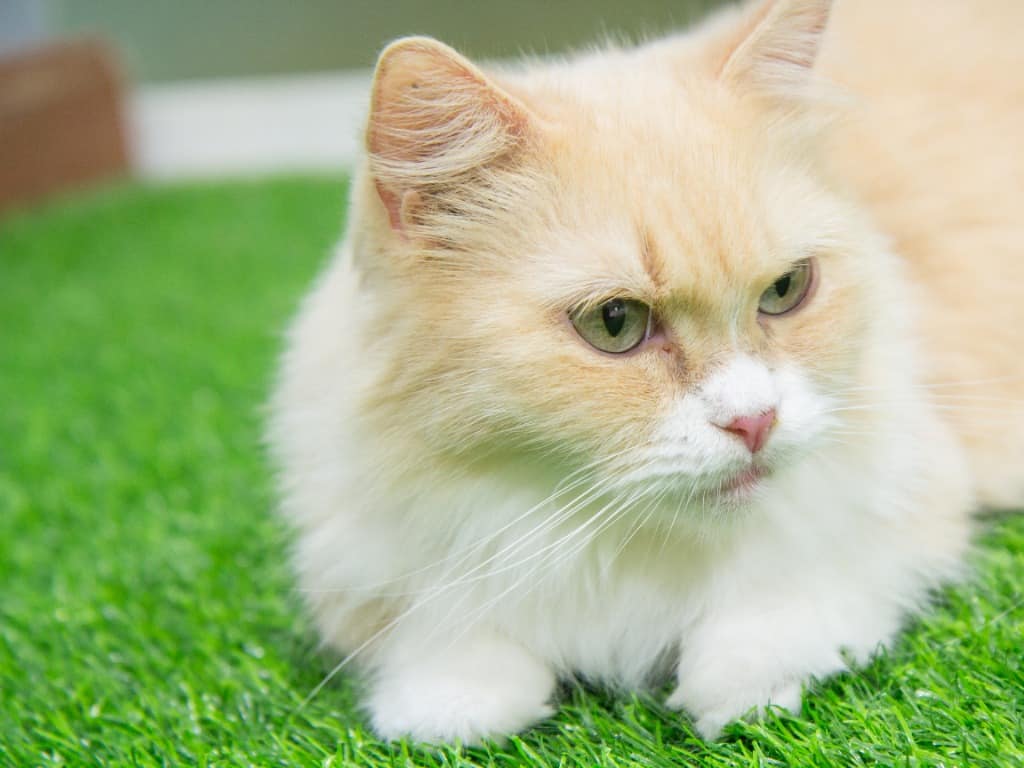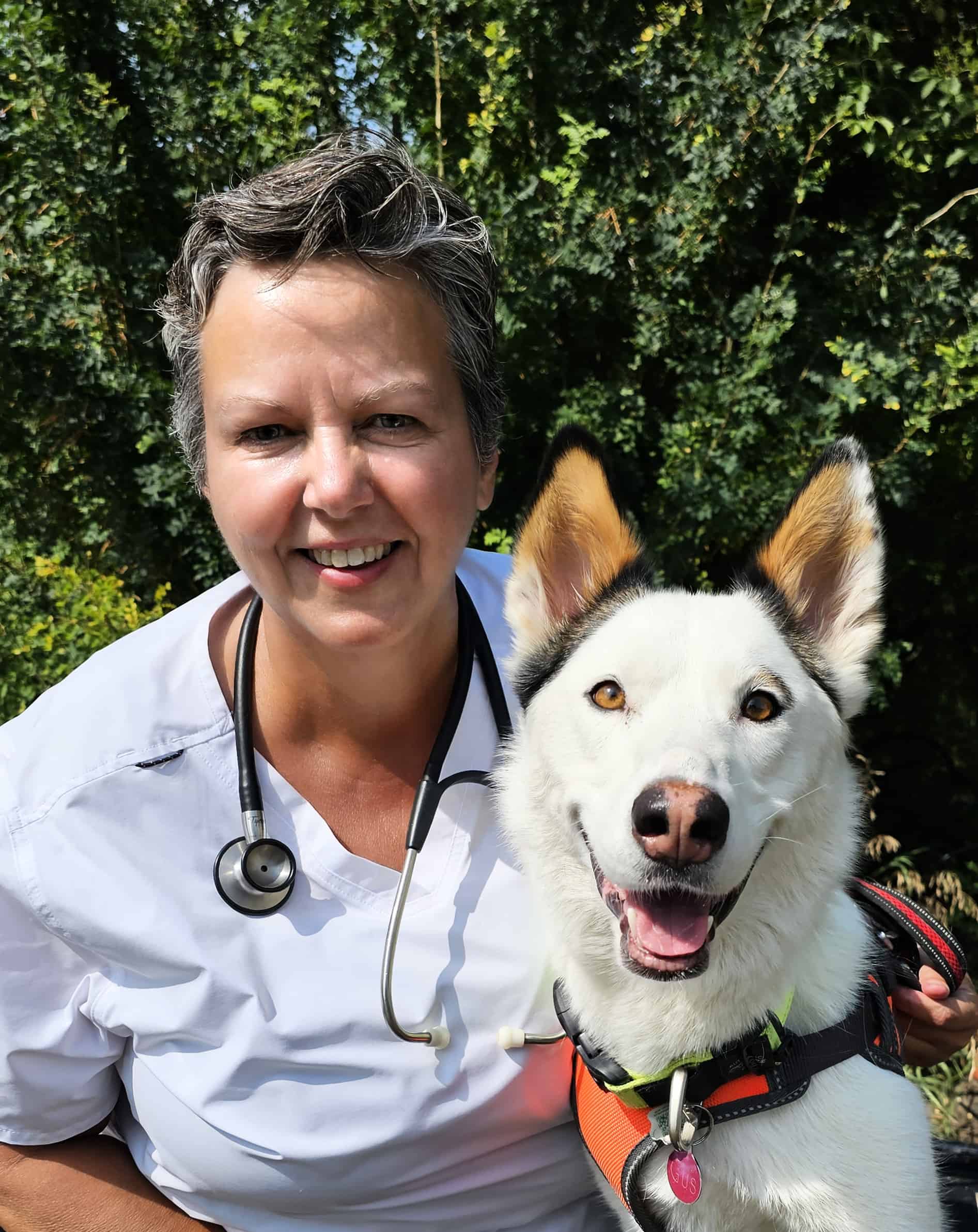Munchkin cats are, without question, adorable! But while they may be small in stature, they are huge on charm and personality. With their short legs, big eyes, and spunky spirit, it’s no surprise that Munchkin cats have become increasingly popular over the years. But what is a Munchkin cat?
Munchkin cats are a relatively new breed characterized by their distinctively short legs. This unique trait is the result of a genetic mutation that affects the length of the long bones in the legs. As a result, Munchkin cats have a charming and endearing appearance that sets them apart from other breeds.
If you’re smitten by their adorable appearance and curious about their unique characteristics, you’ve come to the right place. In this article, we will delve into the origins, personality traits, care requirements, and other interesting aspects of Munchkin cats.
Whether you’re considering bringing a Munchkin cat into your home or simply want to learn more about this captivating breed, read on to learn more about the wonderful world of Munchkin cats!
Munchkin Cat Origins
The first report of cats with short legs dates back to 1944 when a British veterinary report was published describing a case of four generations of short-legged cats. Further reports of cats with this trait emerged from Stalingrad in 1956, then again from New England in 1970 and Louisiana in the 1980s.
This latter case, in the 1980s, involved the discovery of a pregnant female cat with short legs that became the foundation of a new breed of cats now known as the Munchkin.
The Munchkin cat was accepted into The International Cat Association’s (TICA) New Breed development program in 1994. Then, seven years later, TICA granted the breed Championship status effective May 2003.
Why Do Munchkin Cats Have Short Legs?
Munchkin cats have short legs as a result of a naturally occurring genetic mutation known as achondroplasia. This condition affects the development of the long bones in the legs, resulting in shorter legs.
The mutation causing the short legs in Munchkin cats is a dominant trait, which means that even if only one parent carries the gene, there is a chance that the offspring will inherit the trait.
It is important to note that the genetic mutation affecting the Munchkin breed is not related to the similarly named dwarfism found in other animals or humans.
If you want to know more details on this mutation, check out our article on this subject by clicking here.
Munchkin Cat Intelligence
Munchkin cats are known for their problem-solving skills and naturally inquisitive nature. Munchkins often exhibit creative solutions to challenges, using their agility and adaptability to overcome obstacles.
They can figure out how to open doors, navigate obstacles, and find hidden toys or treats. Their curiosity sometimes results in them stealing small objects and hiding or hoarding them.
These cats love to hunt. They can quickly learn to play fetch and will learn to walk on a leash and harness. They are also known to love solving puzzles, which can be used as a way to keep them entertained and exercised.
Their intelligence extends to social interactions as well. Munchkin cats are known to be sociable and enjoy interacting with humans and other pets. They can be quick to understand human emotions and respond to their owners’ cues.
Are Munchkin Cats Easy to Train
Munchkin cats are considered intelligent cats, and thus quite amenable to training. Their ability to learn and understand basic commands or cues can be quite good.
Munchkins, like most cats, are typically motivated by rewards and positive reinforcement. Using treats, praise, or play as rewards can help in training and motivating your Munchkin cat.
Finding what motivates your cat and using it as a training tool can increase their responsiveness to training efforts. For example, one of my two cats is very motivated by food, and picks up on new tricks or commands fairly quickly when her favorite treat is involved!
Of course, like other breeds, Munchkins may need time to understand and respond to the training cues. Short and frequent training sessions, combined with positive reinforcement, tend to yield better results.
When training a Munchkin or any cat, it’s important to focus on training methods that align with their natural behaviors and instincts. Training should be a positive and enjoyable experience for both the cat and the owner.
Certain behaviors, such as litter box use, scratching posts, or basic manners, can be trained and reinforced in most Munchkin cats. However, more complex behaviors, such as tricks or advanced commands, may require additional time, patience, and individual variation.

Munchkin Cat Personality
Munchkin cats have a distinct personality that is often described as playful, outgoing, and sociable.
Munchkins often retain their kitten-like energy and curiosity well into adulthood. They enjoy interactive play, chasing toys, and engaging in activities that keep them mentally and physically stimulated.
These cats are generally described as sociable cats that enjoy being around people. They often form strong bonds with their owners and seek their attention and companionship. Munchkins often like to be involved in their owners’ activities and may follow them from room to room.
Munchkins are also known for their confidence and outgoing nature. They are typically not shy or timid and are often willing to explore new environments and interact with strangers. This trait can make them adaptable to new situations and environments.
Are Munchkin Cats Affectionate
Munchkin cats are generally known to be affectionate and social with their human companions. They tend to be people-oriented and enjoy interacting with their owners. They have a friendly and outgoing nature, and they often seek out attention and affection from their humans.
They may follow their owners around the house, greet them at the door, or curl up in their laps for cuddles. Munchkins often enjoy being petted, scratched, and receiving physical affection from their loved ones.
These cats can be quite tolerant and patient, making them suitable for families with children.
Munchkin Cat Energy Level and Exercise Needs
Despite their short legs, Munchkin cats have a moderate to high energy level and generally require regular exercise and mental stimulation to keep them happy and healthy.
These cats are well-suited for indoor living. Although they can’t jump as well as other cat breeds, they will make good use of vertical spaces such as cat trees, shelves, or perches for climbing and jumping.
They will also benefit from environmental enrichment, which includes providing them with toys, scratching posts, and interactive activities. Rotating toys and introducing new ones can help keep them mentally stimulated and prevent boredom.
Munchkin Cat Appearance
The most distinguishing feature of Munchkin cats is their unique and adorable short legs.
Despite their short stature, Munchkins maintain a well-proportioned body with a sturdy build. Their legs do not hinder their mobility or agility, as they are remarkably adept at jumping, climbing, and playing.
The shortened legs, combined with a variety of coat colors and patterns, contribute to the overall charm and appeal of Munchkin cats. Their endearing appearance and undeniable cuteness make them stand out among other feline breeds.
If you would like to see cute Munchkin cats in action, check out the video below.
How Big Do Munchkin Cats Get
Munchkin cat size can vary depending on individual genetics and other factors, but in general they are typically small to medium-sized cats.
They typically have a normal-sized body, with their short legs being the defining feature. They are not as long-bodied as some other cat breeds, but they are not considered “dwarf” cats either.
Female cats of this breed weigh around 5-7 pounds, while males are a bit larger at 7-10 pounds. They are, of course, shorter than other cat breeds given their short legs. In fact, the Guinness World Record holder for the shortest cat is a Munchkin, measuring in at just 5.25 inches tall!
Munchkin Cat Coat Type
The Munchkin cat breed includes both short-haired and long-haired coat types.
The short-haired version has plush, medium-length fur. The fur is generally dense and soft, requiring minimal grooming. The short coat doesn’t typically mat or tangle easily, making it easier to maintain compared to long-haired breeds.
The long-haired Munchkin has a semi-long or medium-length coat that can have a silky texture. The fur may be denser and may have a slight ruff around the neck. Regular grooming is essential for long-haired Munchkins to prevent matting and tangling.
Munchkin Cat Color And Patterns
When it comes to coat colors and patterns, Munchkins come in a wide range, including solid colors, tabby patterns, tortoiseshell, calico, colorpoints, and more. So, in a nutshell, Munchkins can come in almost color or coat pattern that is commonly seen in cats.
Munchkin Cat Eye Color
Eye color is closely linked to coat color and, since Munchkins come in a wide variety of coat colors, they also have a wide range of eye colors.
Most Munchkins will have eyes that match their coat color, such as blue or green in the white-coated varieties and hazel or copper in the orange tabbies.
How Long Do Munchkin Cats Live?
On average, Munchkin cats have a similar lifespan to that of other domestic cat breeds, which is typically around 12 to 16 years. Also like other breeds, the lifespan of a Munchkin cat can vary depending on various factors, including genetics, overall health, diet, exercise, and quality of care.
Do Munchkin Cats Have Health Issues?
The main health problem in Munchkin cats is breeding considerations related to their genetics. More specifically, it is a concern involving the gene mutation that affects their leg length.
If two Munchkins with one copy of the mutation gene each are bred together, there is a risk that some kittens may inherit two copies of the gene. This can lead to a condition known as “lethal allelism” where affected kittens do not survive.
Munchkins are also known to be at risk for several other conditions related to their genetics and conformation: lordosis (excessive curvature of the spine)and pectus excavatum (hollowed chest).
Because of their shorter limbs and the stress that causes on the joints, Munchkin cats may also be more susceptible to severe osteoarthritis compared to other feline breeds.
The potential for inherited health conditions is one of the underlying arguments underpinning the ethics of breeding Munchkin cats.
Munchkin Cat Care
Munchkin Cat Grooming
Munchkin cats have no specific coat requirements solely due to their breed. Grooming needs for Munchkin cats, regardless of coat length, involve regular brushing to maintain a healthy coat, periodic nail trimming, and dental care.
Long-haired Munchkin cats have the same grooming needs as other long-haired cats (you can read more about this in our article on Grooming Long-Haired Cats).
Munchkin Cat Diet And Nutrition
Munchkin cats, despite their unique physical characteristic of short legs, have the same nutritional needs as other regular domestic cats.
It is important to select a high-quality, complete cat food that meets the nutritional needs of your cat. Dry kibble can also be supplemented with canned wet food for extra moisture content.
Are Munchkin Cats Hypoallergenic?
Like all cats, Munchkin cats are not considered hypoallergenic. Hypoallergenic refers to a reduced likelihood of triggering allergies in individuals who are sensitive to cat allergens.
Allergies to cats are typically caused by a protein called Fel d 1, which is produced in the saliva, skin, and sebaceous glands of cats. This protein can be found in varying amounts across all cat breeds, including Munchkin cats.
While some individuals with cat allergies may have less severe reactions to certain cat breeds or individuals, there are no cat breeds that are completely hypoallergenic.
Individuals with allergies should try to spend time with a Munchkin cat or consult with an allergist before bringing one into their home to determine their individual sensitivities.

Where To Buy Munchkin Cats
Despite being a relatively new breed, it is not that difficult to find a Munchkin kitten to buy if you know where to look.
Reputable Breeders
Reputable breeders prioritize the health of their cats and conduct thorough health and genetic screenings, reducing the risk of inheriting genetic conditions. They also prioritize socialization, ensuring the kittens are well-adjusted and friendly.
With their knowledge of the breed, reputable breeders can provide valuable guidance on care and specific needs. They adhere to ethical breeding practices, providing proper care, nutrition, and living conditions for their cats.
Reputable breeders offer documentation, including registration papers and health records, and provide ongoing support to new owners. By buying from reputable breeders, you increase the likelihood of getting a healthy and well-socialized Munchkin kitten with known genetics.
To find a reputable breeder, research their reputation, visit their facilities, and ensure they prioritize the well-being of their cats. Choosing a reputable breeder ensures a positive experience and helps support the long-term health and well-being of Munchkin cats as a breed.
Pet Stores
Buying Munchkin kittens from pet stores is generally discouraged due to several reasons.
Pet stores often source kittens from unknown breeders, potentially supporting unethical breeding practices and compromising the health and welfare of the cats.
Kittens from pet stores may lack proper socialization and veterinary care. Additionally, purchasing from pet stores perpetuates the cycle of irresponsible breeding and overpopulation.
Instead, it is advisable to seek out reputable breeders who prioritize the well-being of their cats, provide healthy and well-socialized kittens, and offer ongoing support.
Adoption
While adopting rescued cats is highly encouraged, finding a Munchkin cat at an animal shelter may be challenging. Munchkin cats are a specific breed with unique physical characteristics, and they are less commonly found in shelters.
Shelters primarily house mixed-breed and domestic cats. If someone specifically desires a Munchkin cat, seeking a reputable breeder or breed-specific rescue organizations may be a more suitable option.
We do ask our readers to keep in mind that there are many wonderful cats of various breeds and mixes in shelters, waiting for loving homes. Adoption is a compassionate choice regardless of the breed.
Family Pets
A quick search of online “for sale” sites found that listings for Munchkin kittens that appear to come from family homes. Presumably, these are kittens resulting from the mating of family pets and are not registered.
These may provide a lower-cost option than purchasing from a breeder; however, be sure to consider the potential risks associated with unregistered kittens from an unknown source.

Munchkin Cat Price
The price of Munchkin cats varies considerably depending on where you find them.
The cost of a Munchkin cat from a reputable breeder typically ranges from $1500 to $3000, considering factors such as lineage, pedigree, and breeder reputation. However, it is possible to find kittens for sale that display the Munchkin phenotype for far less by exploring online sale listings of pets for sale.
These kittens may exhibit the physical characteristics of Munchkin cats but are not considered “purebred” as they – and possibly their parents – have no registration with recognized breed organizations. Prices for such kittens can vary significantly and may be lower than those from breeders.
Of course, in these cases, it is often “buyer beware”. Since a Munchkin cat can only be bred to a non-Munchkin cat or risk half of the kittens dying, the resulting litter typically averages 50% of the kittens not having the Munchkin gene. These will often be sold as “non-standard Munchkins” and will look like normal cats.
If buying via this route, exercise caution, conduct thorough research, and ensure the kittens are coming from responsible and ethical sources when considering purchasing online.
Check out our article on Munchkin cat prices for further information on what it will cost you to own one of these kitties.
Conclusion – The Nitty Gritty About This Kitty
Munchkin cats are undoubtedly an adorable and unique breed with their signature short legs. While their appearance is captivating, it’s essential to understand their specific needs and considerations.
Reputable breeders play a crucial role in promoting the health and well-being of Munchkin cats through genetic screenings, socialization, and ethical breeding practices. However, adopting rescued cats is always a commendable choice, even if finding a Munchkin cat at a shelter might be challenging.
Remember, there are countless cats in shelters waiting for loving homes, regardless of breed. Whether you choose to adopt or purchase, providing a safe and caring environment for a Munchkin cat will surely bring joy and companionship to your life.



